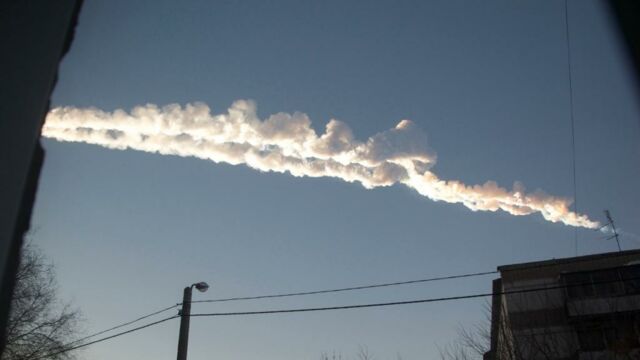Rare carbon micro-crystals have been found in the dust of a meteorite that exploded in Russia almost a decade ago.
Discover our latest podcast
The biggest meteor explosion in the 21st century
The meteor–known as a superbolide–exploded on 15 February 2013 approximately 23km (14.5 miles) above the snowy fields of Chelyabinsk in the Southern Ural region of Russia.
It is the biggest meteor to have exploded in Earth’s atmosphere, which is known as an air burst, since the explosion in 1908 near the Tunguska river in Siberia. According to NASA, the explosion released over 30 times more energy than the Hiroshima atomic bomb.
The event resulted in massive public concern, as more than 1,600 people were injured and 3,600 buildings were damaged. NASA Planetary Defense Officer, Lindley Johnson, said:
The Chelyabinsk event drew widespread attention to what more needs to be done to detect even larger asteroids before they strike our planet. This was a cosmic wake-up call.
Professor Qing-Zhu Yin, from the University of California, agreed. She said, as reported by The Independent:
If humanity does not want to go the way of the dinosaurs, we need to study an event like this in detail. Chelyabinsk serves as a unique calibration point for high-energy meteorite impact events for our future studies.
'The potential of nature'
Scientists have now discovered tiny carbon crystals in the Chelyabinsk dust, according to a new study published recently in the journal EPJ Plus. TU Darmstadt researcher Oliver Gutfleisch and colleagues said:
We focused on unique morphological peculiarities of carbon crystals from the meteoroid’s dust component.
The first carbon crystal was found during an investigation of the dust using an optical microscope, because its facets happened to be in the focal plane.
It was thus a lucky find. The crystals take a variety of unusual shapes, the researchers describing them as 'unique exotic quasispherical and elongated hexagonal symmetry graphite microcrystals.' The discovery 'provides clear insight of atomic structure and formation mechanisms of carbon microcrystals.' In addition:
Unique structures found in the meteoritic dust that have not been observed before demonstrate the unlimited potential of nature to synthesize new materials.
Read more:
⋙ Here’s all you need to know about tonight's meteor shower
⋙ An asteroid 5 times bigger than the Empire State Building will graze the Earth















